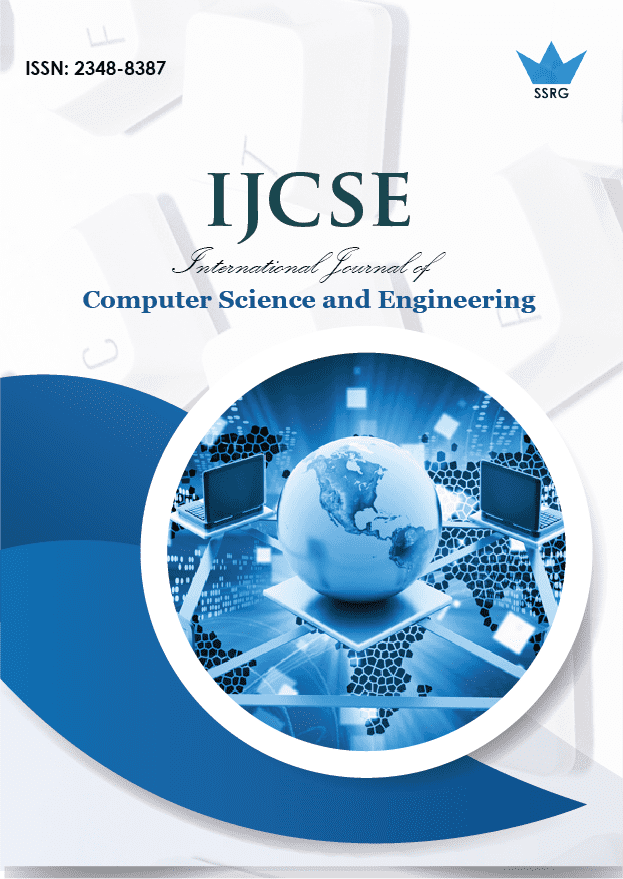Modernizing Banking Systems: A Strategic Shift from Mainframes to Agile Infrastructure

| International Journal of Computer Science and Engineering |
| © 2025 by SSRG - IJCSE Journal |
| Volume 12 Issue 1 |
| Year of Publication : 2025 |
| Authors : Tarun Mathur |
How to Cite?
Tarun Mathur, "Modernizing Banking Systems: A Strategic Shift from Mainframes to Agile Infrastructure," SSRG International Journal of Computer Science and Engineering , vol. 12, no. 1, pp. 11-15, 2025. Crossref, https://doi.org/10.14445/23488387/IJCSE-V12I1P103
Abstract:
Since the 1960s and 1970s, mainframe systems have been at the heart of core banking operations, automating processes and carrying out high-volume transactional work. Using legacy systems has reliably served customers’ needs but also presents major concerns: operational costs, a lack of scalability, and fewer resources specializing in COBOL. The need for a smooth, secure, and fast customer experience through digital banking encounters keeps the struggling aged infrastructure out of pace, which demands modernization as an absolute necessity. The present paper looks at the methodology for gradual, step-by step shifting dependency on mainframes without breaking operational continuity. Based on workload segregation, the paper identifies operations under three categories of critical, semi-critical, and noncritical for prioritization of modernization efforts. Critical workloads, such as real-time customer transactions, use caching solutions and secondary databases to optimize performance with consistency in data. Semi-critical workloads, such as batch processing, are migrated to secondary systems with periodic synchronization, while non-critical workloads, such as the retrieval of archival data, are migrated to lower-cost platforms. The proposed framework provides secondary databases for reading purposes, synchronized in real-time through tools like Apache Kafka, RabbitMQ or NATS, and caching solutions to reduce the further load on the mainframes. In due course of time, all write operations can be routed slowly to the secondary database, thus gradually retiring the mainframe systems. This is a step-by-step methodology of minimizing disruption, preserving data integrity, reducing risk, and providing a scalable, cost efficient infrastructure. The framework not only solves issues like Million Instructions Per Second (MIPS) costs and integration of newer technologies but also positions financial institutions for evolving customer demand, innovation, and operational excellence, instilling a sense of optimism and hope for the future of banking systems.
Keywords:
Mainframe modernization, COBOL dependency, Banking systems, Resiliency, Caching solutions, MIPS cost reduction.
References:
[1] Gloria Mentonelli, Why COBOL Still Dominates Banking—and How to Modernize, Castsoftware, 2024. [Online]. Available: https://www.castsoftware.com/pulse/why-cobol-still-dominates-banking-and-how-to-modernize
[2] Alvaro Ruiz, Key Strategies and Approaches for Mainframe and Core Banking Modernization, Accenture Banking Blog, 2024. [Online]. Available: https://bankingblog.accenture.com/strategies-mainframe-core-banking-modernization
[3] Spas Tyurkedzhiev, Migrating the COBOL Legacy to Modern Systems and Their Challenges, Dreamix, 2022. [Online]. Available: https://dreamix.eu/insights/migrating-the-cobol-legacy-to-modern-systems-and-their-challenges/
[4] Million of Instruction Per Second, ScienceDirect. [Online]. Available: https://www.sciencedirect.com/topics/computer-science/million of-instruction-per-second#
[5] T. Sharvari, and K. Sowmya Nag, "A study on Modern Messaging Systems- Kafka, RabbitMQ and NATS Streaming," Arxiv, pp. 1-5, 2019.
[CrossRef] [Google Scholar] [Publisher Link]
[6] Bing Hu, and Nicholas Mason, "Large Scale Analytics for Workload Segmentation," Journal of Management & Engineering Integration, vol. 16, no. 1, pp. 19-26, 2023.
[CrossRef] [Google Scholar] [Publisher Link]

 10.14445/23488387/IJCSE-V12I1P103
10.14445/23488387/IJCSE-V12I1P103